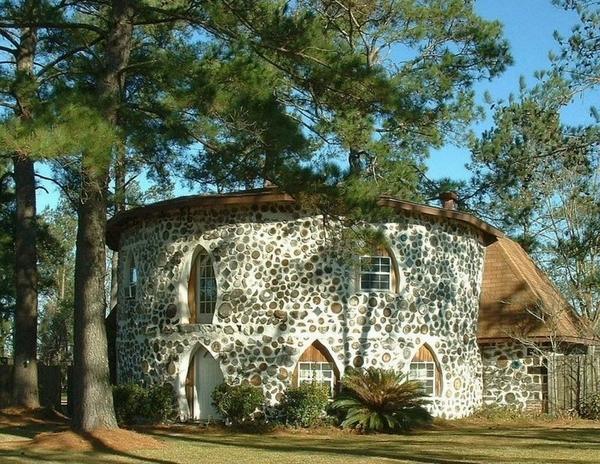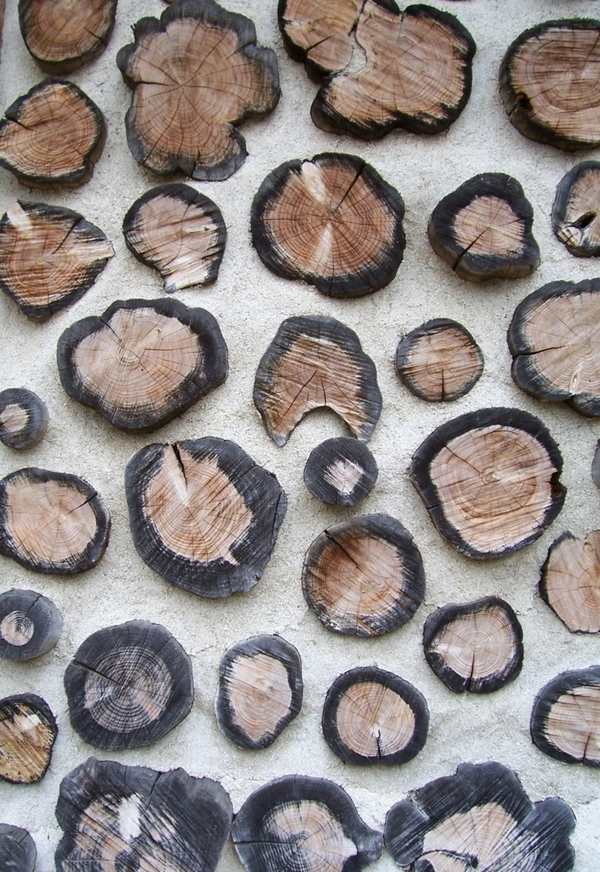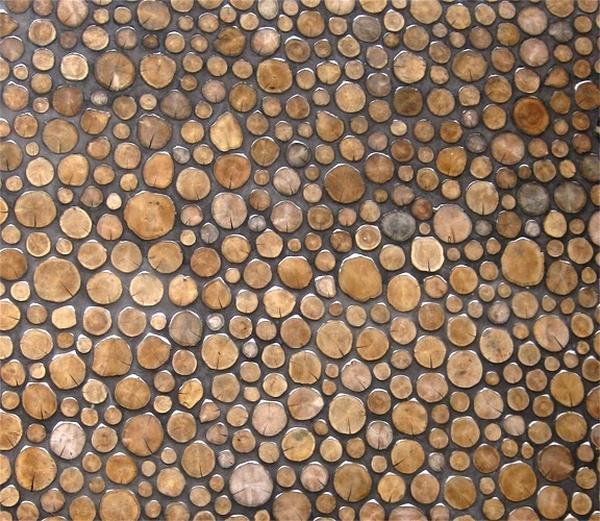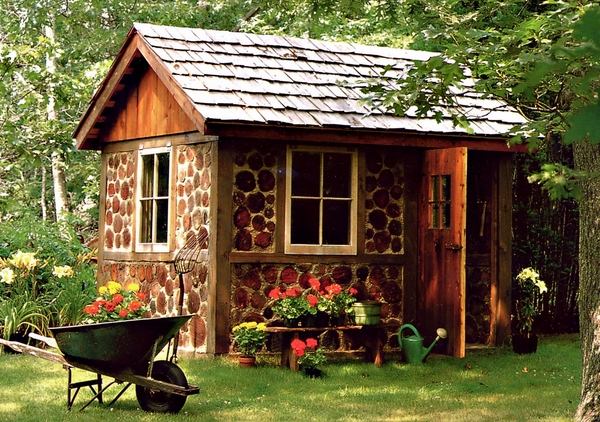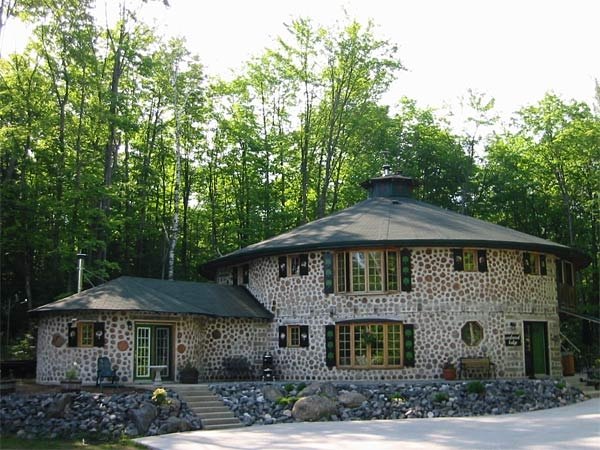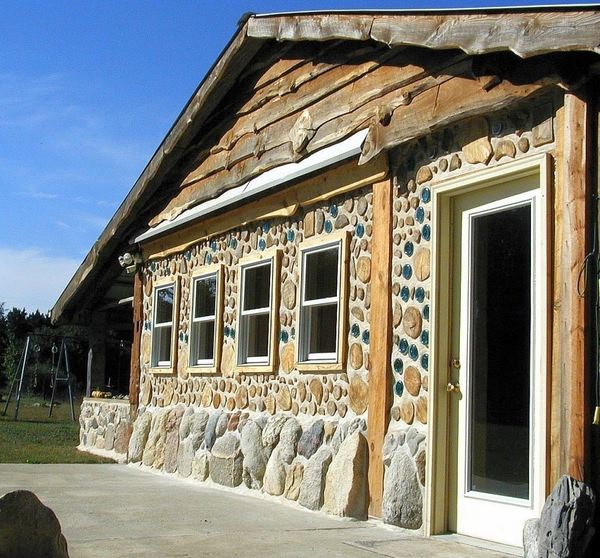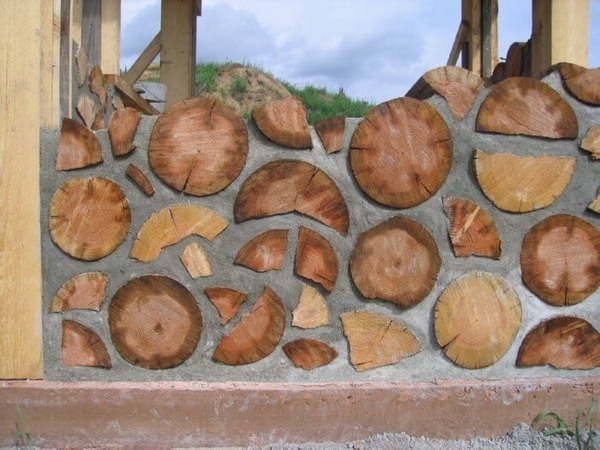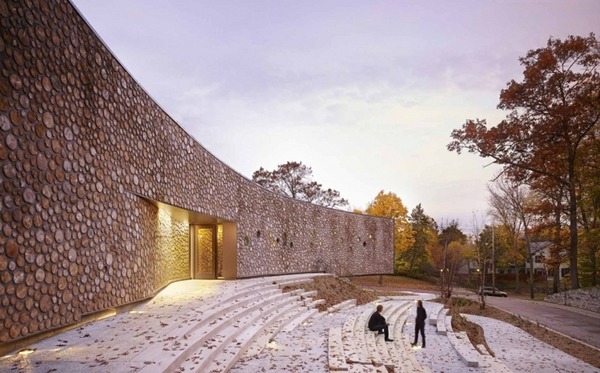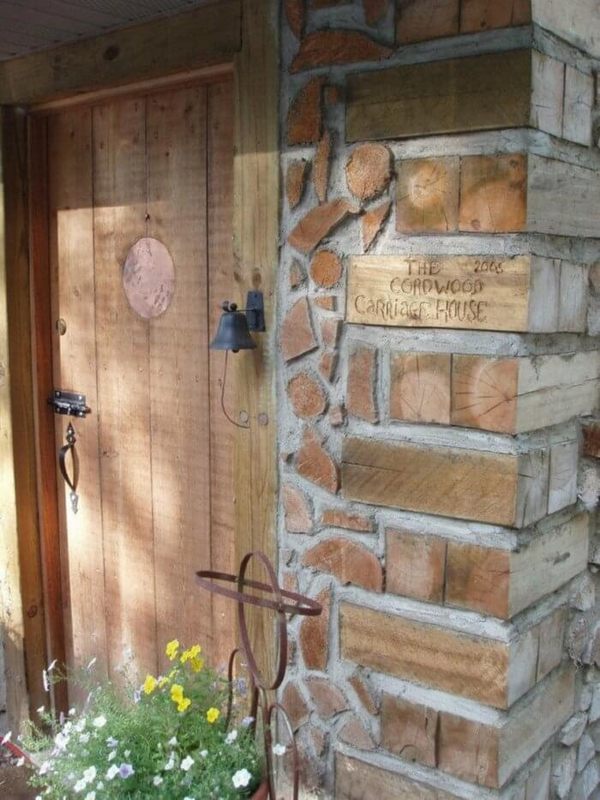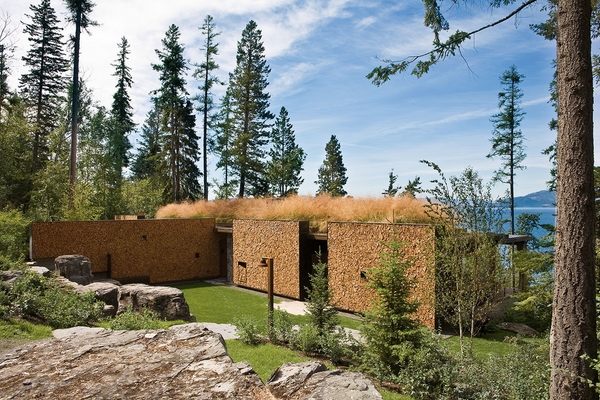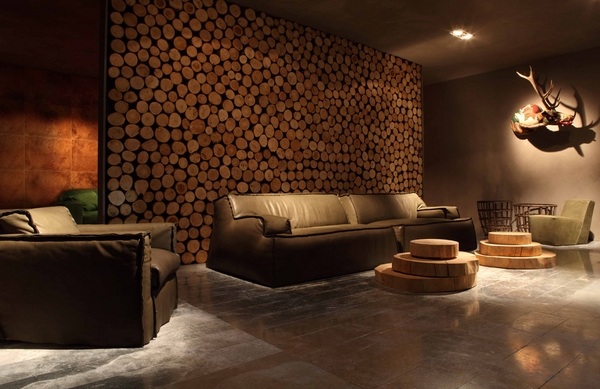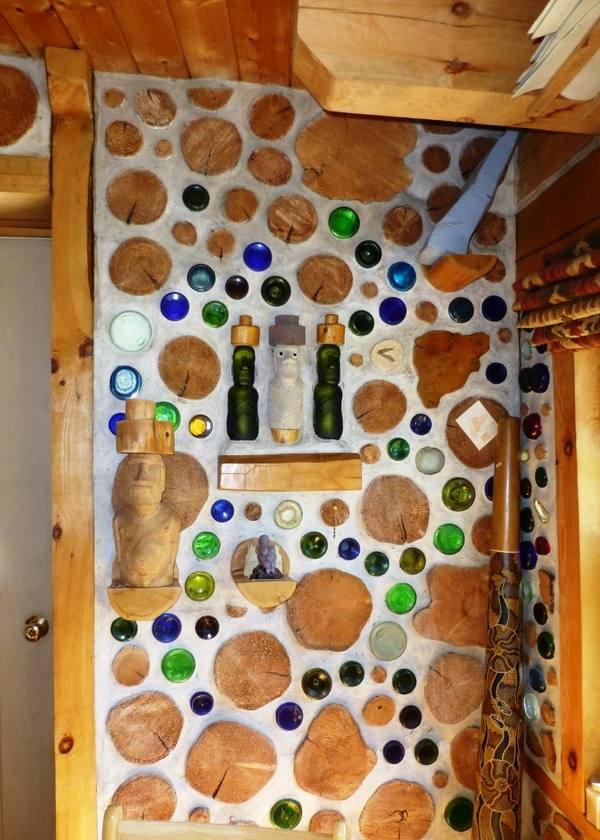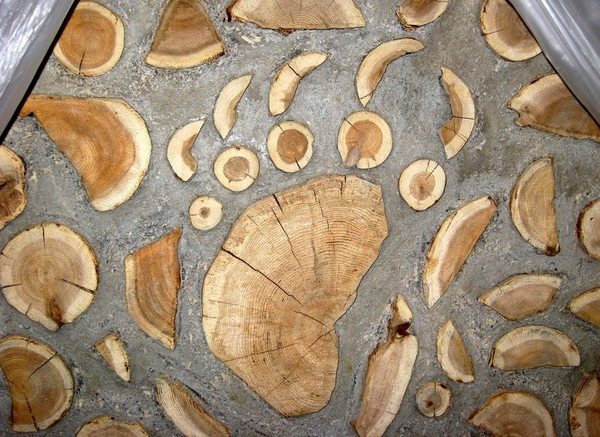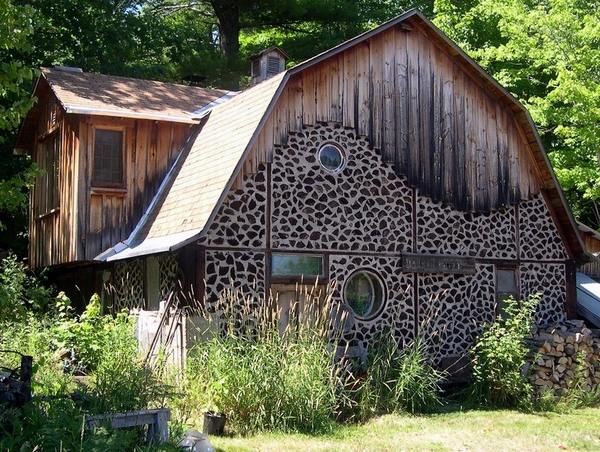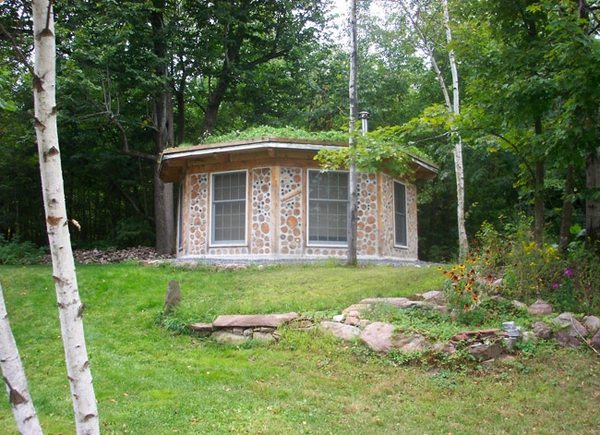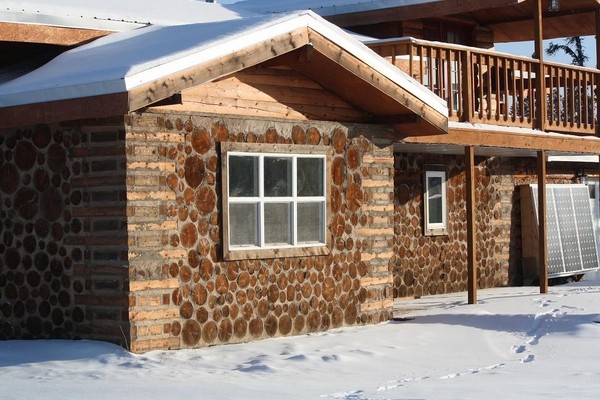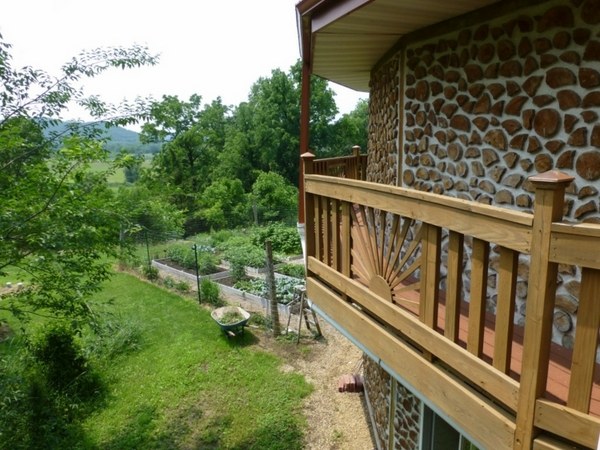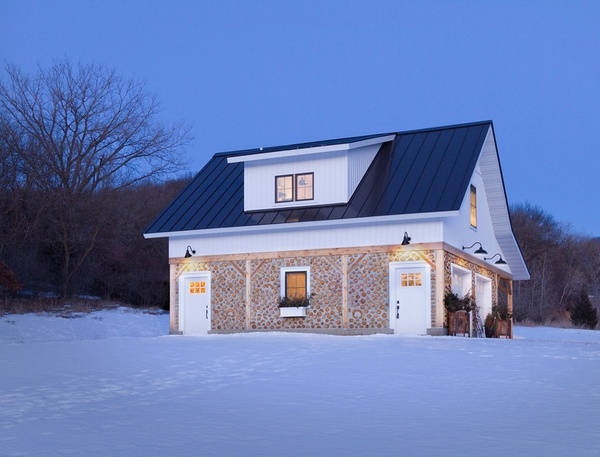Cordwood house is a special construction that is a bit different form the typical home. We shall have a detailed look at its advantages and the benefits for the people who opted for that type of building.
What is a cordwood house? To the majority of people, who are not professionally involved in home construction, terms like cordwood masonry and construction sound unfamiliar. Nowadays, in the age of technology and artificial materials, eco-materials are something unusual and unconventional. Houses made of natural materials have a special positive effect on the micro climate unlike modern impermeable materials. This construction, also known as cordwood masonry or stackwall building, is a construction method using natural materials. Cordwood masonry is a technique that uses short, round pieces of debarked wood, similar to what would normally be considered as firewood and some form of a mortar. Typically, the construction process uses 40 % wood and 60% mortar or other fastening solution and the width of the walls is equal to the length of the wooden material.
The process of building is a cordwood house is very similar to laying rocks in mortar. The logs should be trimmed so that their length is almost the same and then they are aligned with their ends sticking out to create a smooth even surface of the walls inside and out. Mortar is applied adjacent to each end of the log. Usually the wall thickness varies between 16 to 24 inches (40 – 40 cm). In areas with colder climate, wall thickness may be even 36 inches (90 cm).
What is the best type of wood for building a cordwood house?
Selecting the type of timber is quite important. Any type of wood can be used but experts recommend using pines and softwoods as hardwoods have different expansion properties. Softwoods have better insulating properties than hardwoods like maple, oak, and elm and in addition, hardwoods tend to shrink and expand more than softwoods when temperature and humidity levels vary. The most important thing for successful and durable cordwood masonry is the dry wood. It is essential that the wood you chose is absolutely dry. Otherwise there is a possibility of significant shrinkage. How do you know when the wood is dry? Debarked wood should be dried under a shelter and the process usually takes between six months to one year depending on the species of wood, climate and weather conditions. Keep in mind that even after a cordwood house is built, there is a chance that the logs may shrink after a while and you may need to caulk around the logs. To increase the stability of the construction it is best if you used logs from the same species. In this way you will avoid differences in expansion and contraction between the individual logs. Cedar, pacific yew, and juniper have the additional benefit of being naturally rot-resistant while elm, for example, gives off a strong odor that people may find unpleasant or irritating.
What are the pros and cons of cordwood construction?
Many people wonder if it is difficult to build a cordwood house. What experts say is that this type of masonry is more time consuming and labor intensive but almost anyone could build such walls and you do not need to be a talented architect to manage such a project. A cordwood house offers many advantages and benefits.
On the first place stackwall homes are economical and have a lower cost than other types of houses. The price will depend on the availability of suitable wood material in proximity to the construction site. It is best if you chose local types of wood and consult with professionals or people who have already have experience with cordwood building. This method of building can be very resource efficient as it uses wood that might not have much other value.
A cordwood house is environmentally friendly and energy efficient. It is built with natural materials and due to the particular construction the temperature inside the home retains a relatively constant level. It is cool in summer and warm in winter due to the insulating properties of wood.
In terms of aesthetic appearance stackwall homes have a unique appearance. The particular construction gives a beautiful rustic and unique look to the house. The natural look of a cordwood house is reminiscent of a mountain huts and is very welcoming. To add a decorative element to the walls some people use colorful glass bottles, which are called bottle-ends. The bottles are mortared into the wall and help bringing natural light in the house.
The versatility of cordwood construction method is another advantage. This building technique can be used for construction of houses, garden sheds, garden rooms, saunas, cabins or any other small structures. Small constructions are a good alternative and give your garden a rustic look. A shed for storing garden tools is a very practical option. Even a sauna can be built using this method as an option to the traditional sauna, where only wood is used. Cordwood masonry can be combined with other building materials. For example, you can decorate the facade of your house with natural stone. Modern cordwood house construction combines wood logs with stainless steel but if you plan such an option you should consult with an architect. This is one of the technologies which allow homeowners to experience the indescribable pride of building a home, or even a smaller construction, with their own hands.
The main drawback of stackwall homes is that they do require a lot of time and labor, especially if you are planning a DIY project. The time for construction depends on how much time the owner can spare for the project and you have to compare money saving against the time spent. A cordwood house can be difficult to sell especially if the potential buyers are not acquainted with this construction technique and are not aware of the advantages and benefits it offers.


